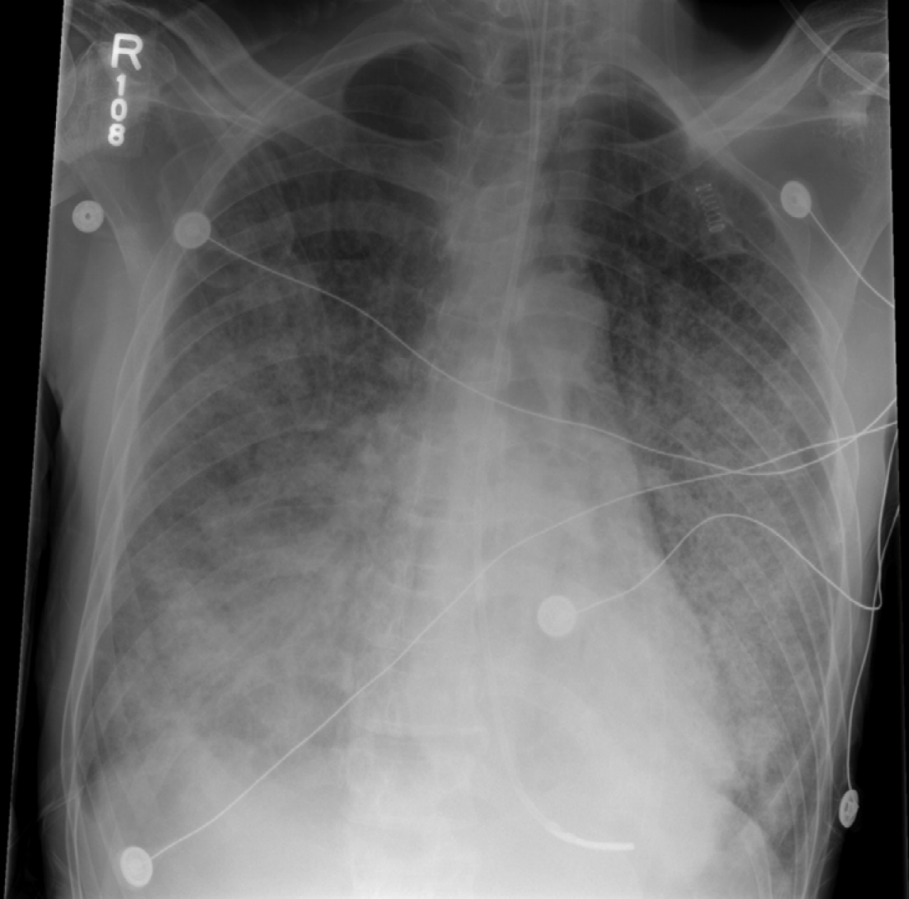HIV AIDS x ray
Jump to navigation
Jump to search
|
AIDS Microchapters |
|
Diagnosis |
|
Treatment |
|
Case Studies |
|
HIV AIDS x ray On the Web |
|
American Roentgen Ray Society Images of HIV AIDS x ray |
Editor-In-Chief: C. Michael Gibson, M.S., M.D. [1]; Associate Editor-in-Chief: Serge Korjian M.D.
Overview
Chest X-ray findings in HIV/AIDS are related to the development of opportunistic lung infections. They include ground-glass infiltrates suggestive of Pneumocystis jirovecii pneumonia, lobar consolidation, pleural effusions, loculated empyemas, and lymphadenopathy.
X Ray
Chest X-ray findings in HIV/AIDS are related to the development of opportunistic lung infections. Common findings include:[1]
- Diffuse ground-glass infiltrates
- Suggestive of Pneumocystis jirovecii pneumonia
- Nodular infiltrates
- Suggestive of bacterial or fungal pneumonia
- Lobar/segmental consolidation
- Suggestive of bacterial or fungal pneumonia
- Pleural effusion
- Suggestive of empyema, parapneumonic effusion, tuberculous effusion, and malignant effusion
- Lobar consolidation
- Suggestive of bacterial or fungal pneumonia
- Hilar lymphadenopathy
- Suggestive of tuberculosis, malignancy, or may be secondary to HIV induced lymphadenopathy
- Cavitation
- Suggestive of tuberculosis, fungal infection, or necrotizing pneumonia
- Mass lesion
- Suggestive of malignancy, tuberculosis, or fungal infection

References
- ↑ Allen CM, Al-Jahdali HH, Irion KL, Al Ghanem S, Gouda A, Khan AN (2010). "Imaging lung manifestations of HIV/AIDS". Ann Thorac Med. 5 (4): 201–16. doi:10.4103/1817-1737.69106. PMC 2954374. PMID 20981180.
- ↑ Castro JG, Morrison-Bryant M (2010). "Management of Pneumocystis Jirovecii pneumonia in HIV infected patients: current options, challenges and future directions". HIV AIDS (Auckl). 2: 123–34. PMC 3218692. PMID 22096390.